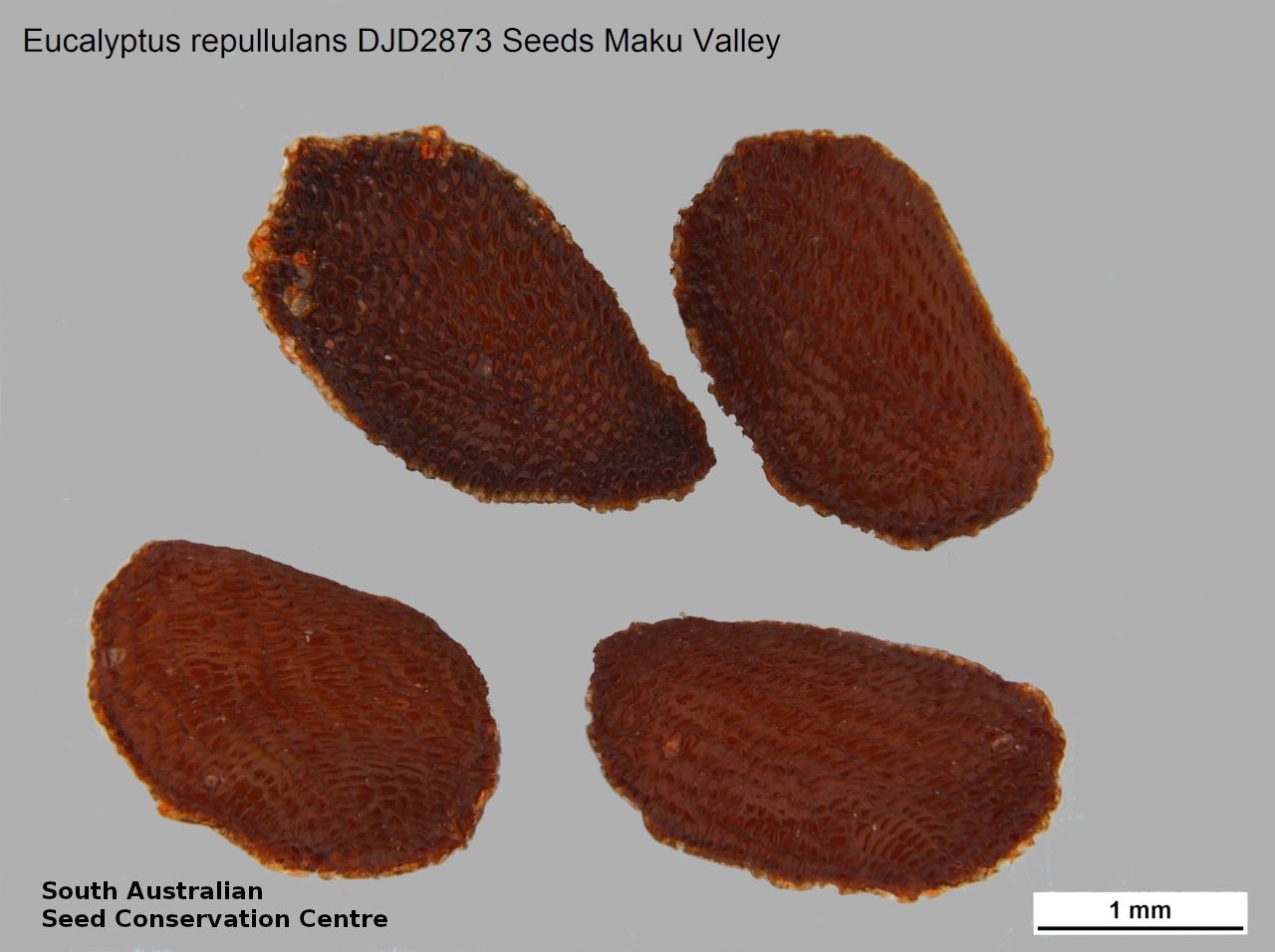











Common names
Chrysoprase Mallee
Etymology
Eucalyptus from the Greek 'eu' meaning well and 'calyptos' meaning covered; alluding to the cap or lid which covers the stamens in the bud. Repullulans from the Latin 'repullulans' meaning sprouting again; alluding to the mallee habit of this species which distinguishes it from the Western Australian endemic E. striaticalyx , which has a tree habit.
Distribution and status
Found in the far north-west corner of South Australia on Dulgunja Hill, growing on rocky hill-slopes with outcropping chrysoprase (a type of quartz that is coloured green by small amounts of nickel). Also found in Western Australia. Native. Very rare in South Australia. Uncommon in Western Australia.
Herbarium region: North Western
AVH map: SA distribution map (external link)
Plant description
Multi-stemmed mallee to 6 m high with smooth, pinkish to pale grey to cream bark throughout. Juvenile leaves ovate, dull, blue-green. Adult leaves to 125 mm long and 30 mm wide, narrow lanceolate to lanceolate, sometime slightly waxy, dull, blue-green. Flowers in groups of 7-9 in axils of the leaves. Buds to 11 mm long and 6 mm wide, waxy, bud-cap round to cone-shaped, ribbed, equal in width or wider than the base. Flowers cream. Fruits are cup-shaped to slightly bell-shaped fruit to 9 mm long and 9 mm wide, smooth to weakly ribbed, waxy when young, disc descending, valves 3 or 4 at or just below the rim. Seeds are reddish-brown ovoid seed to 3 mm long and 1.5 mm wide, with reticulated surface. Seed embryo type is folded.
Seed collection and propagation
Collect seeds between January and December. Collect mature fruits that are dark and hard (difficult to break with a finger nail), with the valves un-open any time of year. Leave the fruits in a breathable container in a dry room for one to two weeks. This allows the valves on the fruit to open and release the seeds. Separate the seeds by placing all the materials into a bucket and shaking it to dislodge the seeds. Pass the material through a sieve to separate the unwanted material. The finer material will contain both seeds (soft) and frass (hard) usually distinguishable from each other but can be very similar in shape and colour. With finer sieves, the seeds can be separated from the frass but this is not essential for storage or propagation. Store the seeds with a desiccant such as dried silica beads or dry rice, in an air tight container in a cool and dry place. From one collection, the seed viability was high, at 100%. Seeds are non-dormant, viable seed should germinate readily.
| Location | No. of seeds (weight grams) | Number of plants | Date collected | Collection number Collection location | Date stored | % Viability | Storage temperature |
|---|---|---|---|---|---|---|---|
| BGA | 5,400 (6.28 g) | 30 | 29-Nov-2013 | DJD2873 North Western | 24-Mar-2015 | 100% | -18°C |
Number of plants: This is the number of plants from which the seeds were collected.
Collection location: The Herbarium of South Australia's region name.
% Viability: Percentage of filled healthy seeds determined by a cut test or x-ray.